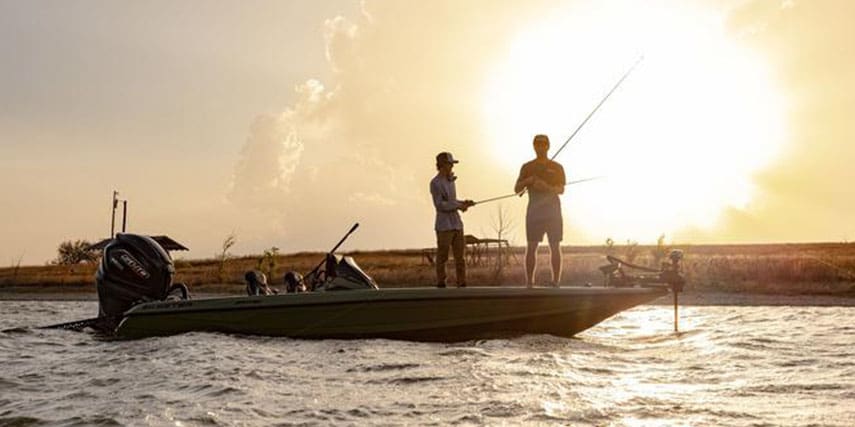One of the most challenging times of the year for bass fishermen occurs during the bone-chilling cold of winter. The colder temperatures make for less-than-ideal conditions for the typical fisherman. To stay comfortable for an extended period in the harsh elements, most bass anglers try to dress as warm as possible and tough it out during a slower feeding time in hopes of succeeding at winter fishing.
For most anglers, once fall fishing ends, their boats are pulled inside for the winter, and their rod and reels get a break until the first signs of spring. However, winter fishing can result in larger-than-average bass catches. It only takes the angler paying attention to what bass are doing and figuring out how to lure them out of their winter hiding spots. Below are three things to consider before heading to the water during the cold winter.

Slow Down
When winter produces colder days and nights, the water temperatures drop dramatically. When this happens, bass do not want to move as much as when the water is warmer. Much like any other animal or human, we don’t want to do much except try to stay warm when the coldest part of the year is upon us.
When trying to catch a winter-time bass, it is vital to slow down the lure’s speed. The bait will move slower through the water, like the bass. To imitate a more realistic bait, move the lure slowly through the water, and the slower-moving bass will have more time to react to biting it.
For anglers to achieve a slower approach, avoiding faster lures such as lipless crankbaits, jerk baits, and spinner baits are essential. Instead, use bottom feeders and slower-moving lures such as jigs, spoons, and small plastic baits.

Water Color
After selecting slow-moving lures, the next step is finding where most of the bass are located. When lake fishing, it is vital to find areas where bass can stay warm. Typically, the best time to catch wintertime bass is during the afternoon when temperatures reach their highest point. The question for most anglers has to do with bass being found in shallow or deep water.
Like most of the year, bass will be found where much of the shad and other bait is located. To find shad, the angler must pay attention to the water color. When the water is clear, baitfish will likely be in shallow water because the sun can shine through and create higher water temperatures. In dirty water, the bait will most likely be found in deeper waters. Even though bass do not chase the bait around as much as they do in the spring and summer, they do stay close to shad for when they are ready to eat.

Smaller Lures
The reason bass move slower and are less likely to eat as much during the winter is due to a massive decrease in their metabolism. The cold winter slows a bass’s metabolism to the lowest point of the entire year. When a bass has a low metabolism, its digestive system cannot handle larger bait. Therefore, anglers need to use smaller size lures. Small jigs or soft plastic lures, three inches and under, are the best to use when the water is cold.
During the peak of winter, it has been noted that some anglers catch larger-than-average bass. Many fishermen assume they must use larger lures to catch giant bass – this way of thinking is inaccurate. Because of the slowed metabolism and inability to digest larger bait, even the big boys prefer smaller-in-size bait. It is important to remember that even big bass do not have the same appetite as they do during warmer months. A successful day on the lake during the winter is, unfortunately, going to be much less fruitful than a good day during the spring or summer. Because bass eat much less during the cold months, a good winter fishing day will probably be around ten to fifteen bites compared to the warmer months, when bites may last throughout the day. As with many other winter tasks, the action will be slow, yet when an angler sets the hook on a big largemouth bass during the winter, they can go home at the end of the day warm and fulfilled by another successful trip on the water.


